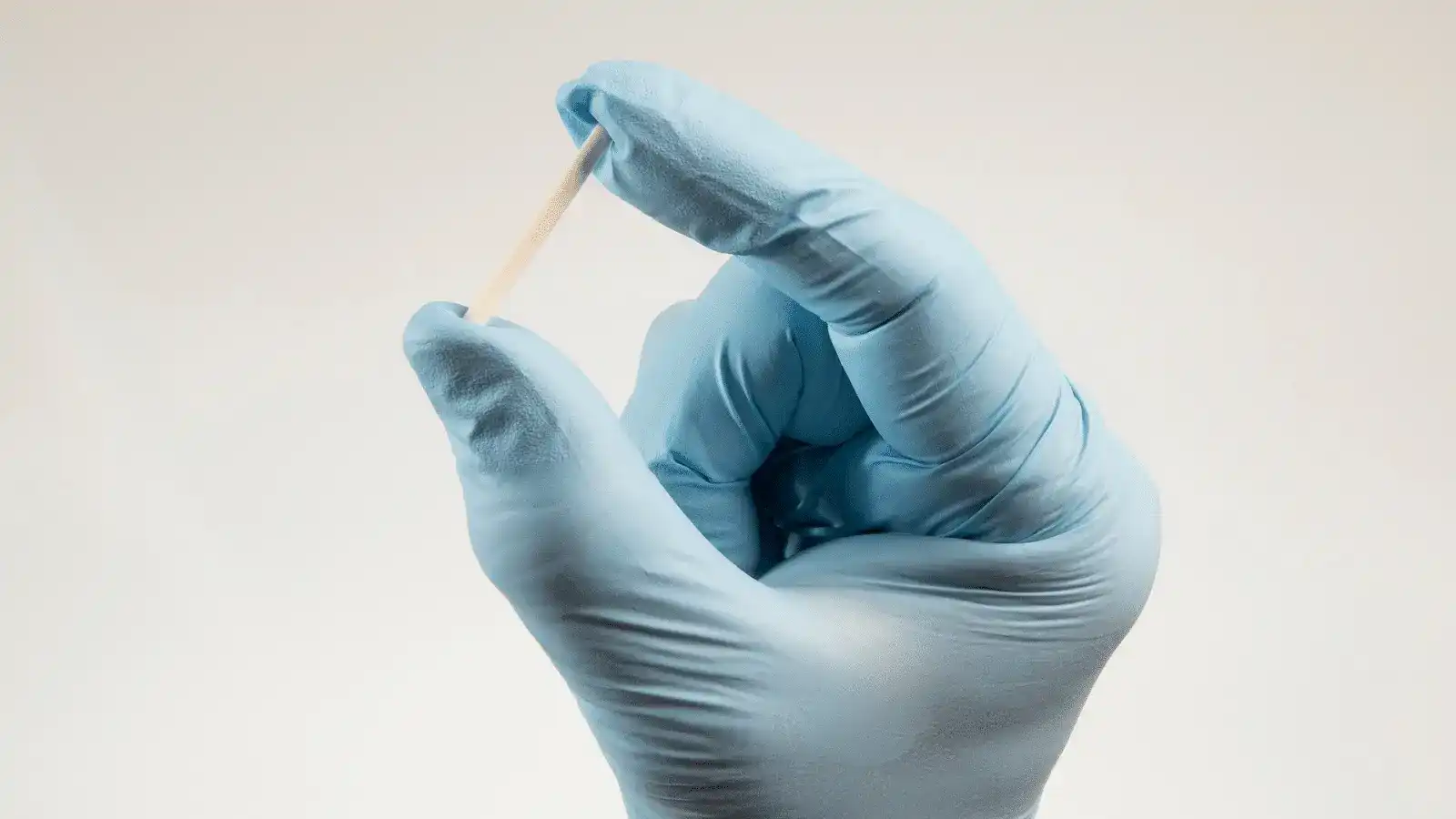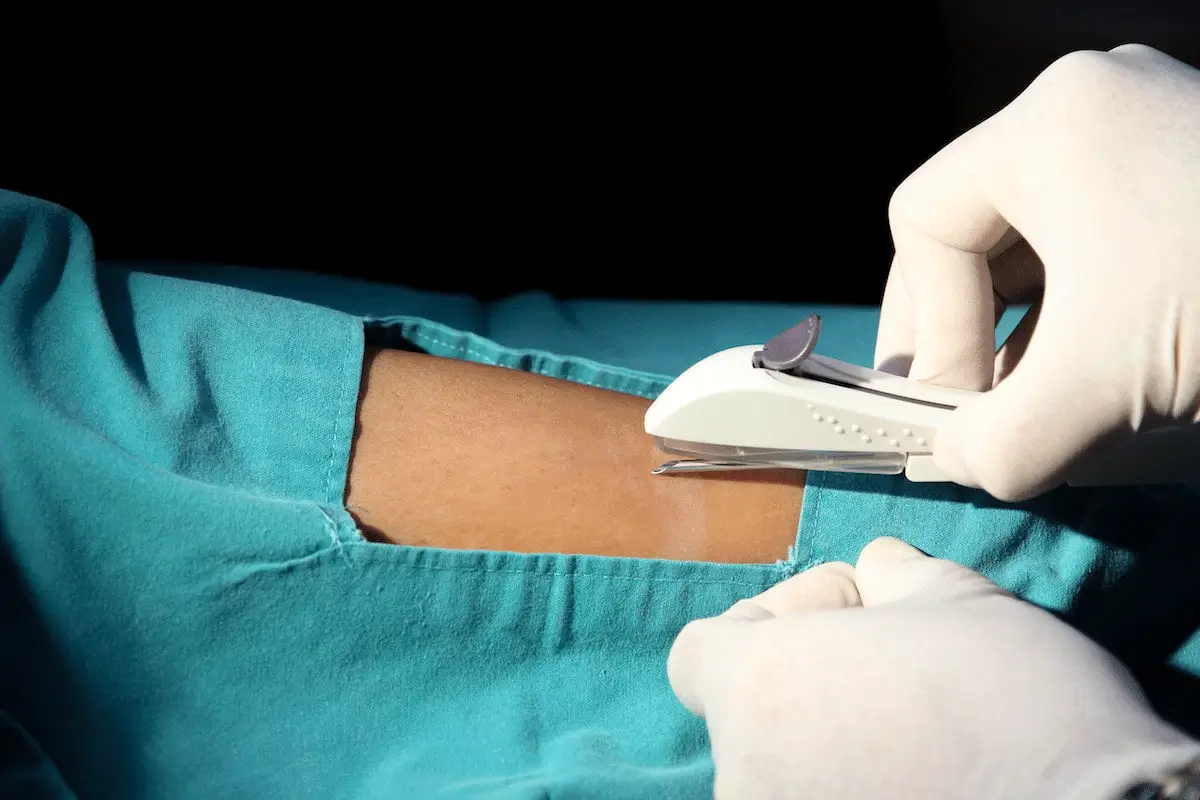Only for Licensed Professionals
Only for Licensed Professionals

How Effective Is Nexplanon?
David Fuller
Last Updated On: October 5, 2025
Birth control isn’t just about preventing pregnancy; it’s also about giving people more choice, confidence, and control over their health and future. For many, contraception can even bring added benefits, like lighter or more manageable menstrual cycles. The Centers for Disease Control and Prevention (CDC) highlights that having access to reliable options can improve overall reproductive health and help individuals make decisions that align with their life goals.
Among the many available methods, Nexplanon stands out for its simplicity and effectiveness. This small, matchstick-sized implant is placed just under the skin of the upper arm and provides protection for up to three years. With more than 99% effectiveness, it offers peace of mind without the daily reminder of taking a pill or the need for frequent upkeep.
In this article, we’ll explore just how effective Nexplanon really is, how it works inside the body, and what factors to consider when deciding if it could be the right choice for you.
Key Takeaways
- Nexplanon is one of the most effective reversible contraceptives, with an efficacy rate above 99% in both clinical trials and real-world use.
- The implant contains etonogestrel, a progestin that prevents ovulation by steadily releasing into the bloodstream.
- FDA-approved for up to 3 years, with emerging evidence suggesting possible effectiveness for up to 5 years (off-label in the U.S.).
- Irregular bleeding is the most common side effect and main reason for early removal. These changes are not harmful and do not reduce contraceptive protection.
- Effectiveness remains strong across weight groups, though data in women with very high body weight (BMI ≥30) are limited, warranting closer follow-up.
- Nexplanon removes the risk of user error, offering near-equal effectiveness in “perfect use” and “typical use.”
- Certain medications, particularly enzyme-inducing drugs, may lower hormone levels and reduce protection.
- With proper insertion, counseling, and monitoring, Nexplanon provides reliable, low-maintenance, and discreet contraception that many women find highly satisfactory.
About: Operating since 2016, Med Supply Solutions is known for being one of the industry’s top and trusted suppliers of cosmetic and viscosupplementation products. If you’re looking to buy Nexplanon online, contact our sales department for more information.

Clinical Trial Data on Nexplanon’s Effectiveness
To truly understand how well Nexplanon works, it helps to look at the results of large-scale clinical trials. In carefully controlled studies, the implant demonstrated an efficacy rate of over 99.7%, meaning fewer than one unintended pregnancy per 1,000 women during its approved three-year use. These findings place Nexplanon among the most effective reversible contraceptives available today.
Importantly, this high level of protection was observed across women of different ages and backgrounds, regardless of whether they had given birth before. Unlike oral contraceptives, which depend on daily consistency, Nexplanon sidesteps the challenge of missed doses. This unique advantage is one reason why it is regarded as both dependable and low-maintenance.
The implant contains etonogestrel, a progestin that steadily releases into the bloodstream to prevent ovulation. For those curious about what’s inside, looking into Nexplanon ingredients confirms that this active hormone is the key driver of its contraceptive effect. By maintaining consistent hormone levels, the implant provides reliable protection over time and upholds its reputation for safety and effectiveness.
Real-World Evidence of Nexplanon Success Rates

While trial data is essential, what really matters is how Nexplanon performs outside of research settings. Real-world evidence shows that fewer than 1 in 100 women using the implant for a year experience pregnancy, even across diverse populations that include teenagers, young adults, and women with busy or unpredictable lifestyles.
One of Nexplanon’s most substantial benefits is that it removes user error. Forgetting to take a pill, misplacing a patch, or delaying a shot can all lower effectiveness with other methods. The implant, once inserted, does not rely on memory or routine, making its actual-use effectiveness nearly identical to its perfect-use effectiveness—a rare quality among contraceptives.
Beyond effectiveness, user satisfaction is consistently high. Many women report peace of mind knowing that protection is constant and does not interfere with daily life. This reliability is why many gynecologists and family planning specialists consider Nexplanon a top-tier option for long-term contraception.
Factors That May Reduce Nexplanon’s Contraceptive Effectiveness

Although Nexplanon is among the most reliable methods, certain circumstances may slightly impact its performance. These situations are uncommon but essential to understand:
- Improper Insertion: If the implant is not placed correctly under the skin, hormone release may be reduced.
- Medication Interactions: Certain drugs, particularly enzyme-inducing medications like some anticonvulsants or antibiotics, can interfere with hormone levels.
- Body Weight Considerations: Evidence shows Nexplanon is highly effective across most weight groups. However, data in women with very high body weight (over 130% of ideal body weight or BMI ≥30) are limited. While no clear reduction in effectiveness has been proven, closer follow-up may be advised.
- Early Removal or Migration: In rare cases, where the device shifts position or is removed prematurely, it can affect the duration of protection.
Even with these factors, the Nexplanon pregnancy rate remains extremely low when the implant is inserted correctly and monitored by a trained healthcare provider.
It’s also worth noting that in the United States, Nexplanon is FDA-approved for up to 3 years of continuous use. Some studies and international guidelines suggest it may remain effective for up to 5 years, though this longer duration is considered off-label in the U.S.
Counseling Patients on the Reliability of Nexplanon
Clear and open communication plays a major role in ensuring patients feel confident with their choice of contraception. Providers should highlight that Nexplanon offers over 99% effectiveness, while also preparing patients for possible side effects.
The most common side effect — and the leading reason some women choose early removal — is irregular bleeding. This may appear as unpredictable spotting, prolonged bleeding episodes, or, in some cases, no bleeding at all. While these changes are not harmful and do not signal reduced protection, discussing them in advance helps set realistic expectations and improves satisfaction.
Counseling should also include:
- Comparison with other methods: Unlike pills, patches, or barrier methods, Nexplanon requires no daily or situational action.
- Medication checks: Patients should review all current prescriptions and supplements with their provider to avoid interactions.
- When to seek medical advice: Concerns about insertion site issues, unusual symptoms, or possible medication conflicts should always be addressed promptly.
By combining reassurance with practical information, providers can empower women to make informed decisions. Patients leave knowing that Nexplanon is one of the most reliable and convenient contraceptives available, with its strengths and limitations clearly explained.
Conclusion
Nexplanon consistently ranks among the most effective contraceptive options, with a pregnancy rate of less than 1% per year. In both controlled trials and everyday use, its protection is unmatched by most alternatives. For women seeking a long-lasting, low-maintenance solution, Nexplanon delivers confidence and peace of mind.
While certain factors — like medication interactions or concerns about insertion — may require attention, these risks are rare and manageable. With proper counseling, professional insertion, and ongoing communication, Nexplanon offers a strong balance of convenience, reliability, and satisfaction, making it an excellent choice for many women considering their contraceptive options.
FAQs
1. How effective is Nexplanon compared to birth control pills?
Nexplanon is more effective, with a success rate above 99%, while pills typically achieve around 91% effectiveness in real-world use due to missed doses.
2. Can medications reduce Nexplanon’s effectiveness?
Yes. Certain drugs, especially enzyme-inducing medications like some seizure treatments, can lower hormone levels and reduce effectiveness. Patients should consult providers about interactions.
3. Does body weight affect Nexplanon success rates?
Most studies confirm consistent effectiveness across weight groups, but some evidence suggests slightly lower efficacy in women with very high body weight.
4. What is the Nexplanon pregnancy rate?
The pregnancy rate is less than 1% per year, making it one of the most reliable contraceptive options available.
References
Centers for Disease Control and Prevention. Contraception. https://www.cdc.gov/contraception/index.html
What are the advantages of the birth control implant? Planned Parenthood. https://www.plannedparenthood.org/learn/birth-control/birth-control-implant-nexplanon/what-are-the-benefits-of-using-the-birth-control-implant
Ali M, Akin A, Bahamondes L, et al. Extended use up to 5 years of the etonogestrel-releasing subdermal contraceptive implant: comparison to levonorgestrel-releasing subdermal implant. Human Reproduction. 2016;31(11):2491-2498. doi:10.1093/humrep/dew222
Ali M, Bahamondes L, Landoulsi SB. Extended Effectiveness of the Etonogestrel-Releasing Contraceptive Implant and the 20 µg Levonorgestrel-Releasing Intrauterine System for 2 Years Beyond U.S. Food and Drug Administration Product Labeling. Global Health Science and Practice. 2017;5(4):534-539. doi:10.9745/ghsp-d-17-00296
Teal S, Edelman A. Contraception selection, effectiveness, and adverse effects. JAMA. 2021;326(24):2507. doi:10.1001/jama.2021.21392
Products
Cart
Log In
Newsletter
Subscribe for exclusive offers and updates on new arrivals
Share feedback at:
Working Hours
MON - SUN 9AM to 6PM EST
The Most Popular Brands
Med Supply Solutions
Support
Secure checkout is guaranteed with full adherence to PCI DSS payment standards.
Products listed here are guaranteed authentic and manufacturer-sourced.
Pay easily with trusted providers


*Google and Apple Pay are currently only available via a direct link provided by your account manager.
Copyright 2025. Med Supply Solutions